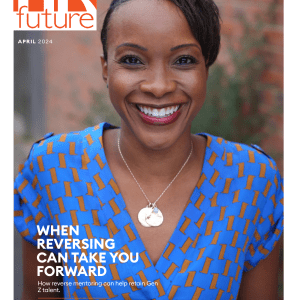With the wholesale shift to a home working environment, the use of video technology has become ubiquitous for many organisations. Video technology as a communication tool is amazing and it has been fantastic to see it come into its own in supporting organisations and allowing them to continue to operate during these difficult times.
Within the talent community, many non-key sector organisations have had a ‘recruitment freeze’ which is understandable. However, for those organisations who are still recruiting, or those that are starting to evolve their recruitment process in reaction to the current situation, hiring decisions will need to be made and they will need to be made remotely.
This presents an interesting dilemma for those about to offer roles, and we’ve experienced a significant reluctance from organisations to make formal offers of employment to individuals they’ve yet to meet face-to-face. A lack of connection, lack of process, lack of robustness in the interview process all seem to be concerns.
Our research shows that without interviewing technology or a formal process to follow, typical video interviews (reviewing a CV and experience) are 30-40% shorter than if they were face-to-face, logically meaning a less comprehensive process has taken place leading potentially to wrong decisions being made.
So we want to share some best practice tips for interviewing remotely. If followed, this should give the organisation and talent community greater reassurance in making a decision, without actually ‘meeting’ a future employee.
1. Don’t forget the small talk!
It is common etiquette to have a degree of repartee and small talk prior to beginning the formalities of CV review and competency-based questioning. This should still take place. We always recommend you make the applicant feel comfortable. Within the competitive employment market, the organisation is selling itself as much as the applicants it is showcasing themselves, so give yourselves and the applicant the best chance to shine.
2. Have a structure and explain the structure to applicants
A good structure to follow is introduction, CV review, competency based questions and then wrap up. Make sure you have prepared for the interview; have your questions to ask about work history prepared in advance, and familiarise yourself with the relevant competency based questions.
3. I don’t have a competency framework!
Unstructured interviews produce a likelihood of an employee still being in the organisation after 1 year, at less than 50%. Video technology adds two additional limiting factors – the interviewer not picking up non-verbal cues and the applicants generally feeling less comfortable in a video based environment than face-to-face. (Gorman, C. Allen & Robinson, Jim & Gamble, Jason. 2018). Therefore, the use of CBI’s is paramount.
If you don’t have a competency framework, pick the top 4 skills and behaviours required for success within the job and think about scenario based questions you could ask. You can also ask behaviour-based questions around your organisation’s values. These can be a good way of determining cultural fit.
4. How do I score it?
The most common method is using the STAR technique where you assess whether the applicants effectively described the Situation, Task, Action taken and subsequent Results. Best practice would dictate that you would use a competency-based interview and assessment platform to score this, however, if you don’t have one of these, at the very least log and write down the answers.
5. Wrap up and leave a positive impression
Conclude the interview as normal, ask the applicant if they have any questions, and ensure they know about the next steps. Whether the candidate is successful or not, you want them to come away from the interview feeling like they have had a good experience of you as a person and the organisation as a whole. And, importantly, that the process has been fair and transparent.
About the Authors
Lee McQueen is CEO of Phoenix51, a technology led HR and Talent assessment platform, with 20 years’ experience in talent acquisition and the assessment and competency framework space. Underpinned by a core understanding of the importance of talent analytics, Lee is firm in his belief the data driven approach to assessment will define the next epoch in talent assessment and beyond.
Chris Wimshurst is Chief Operating Officer of Phoenix51. He is a business psychologist with qualifications in cognitive behavioural coaching and psychometric assessment, and helps design systems and frameworks that take organisations through the entire talent lifecycle of assessing, hiring, training and retaining.
Did this article help you? If you’d like to surround yourself with global HR Thought Leaders and Experts, subscribe to HR Future digital magazine.

























